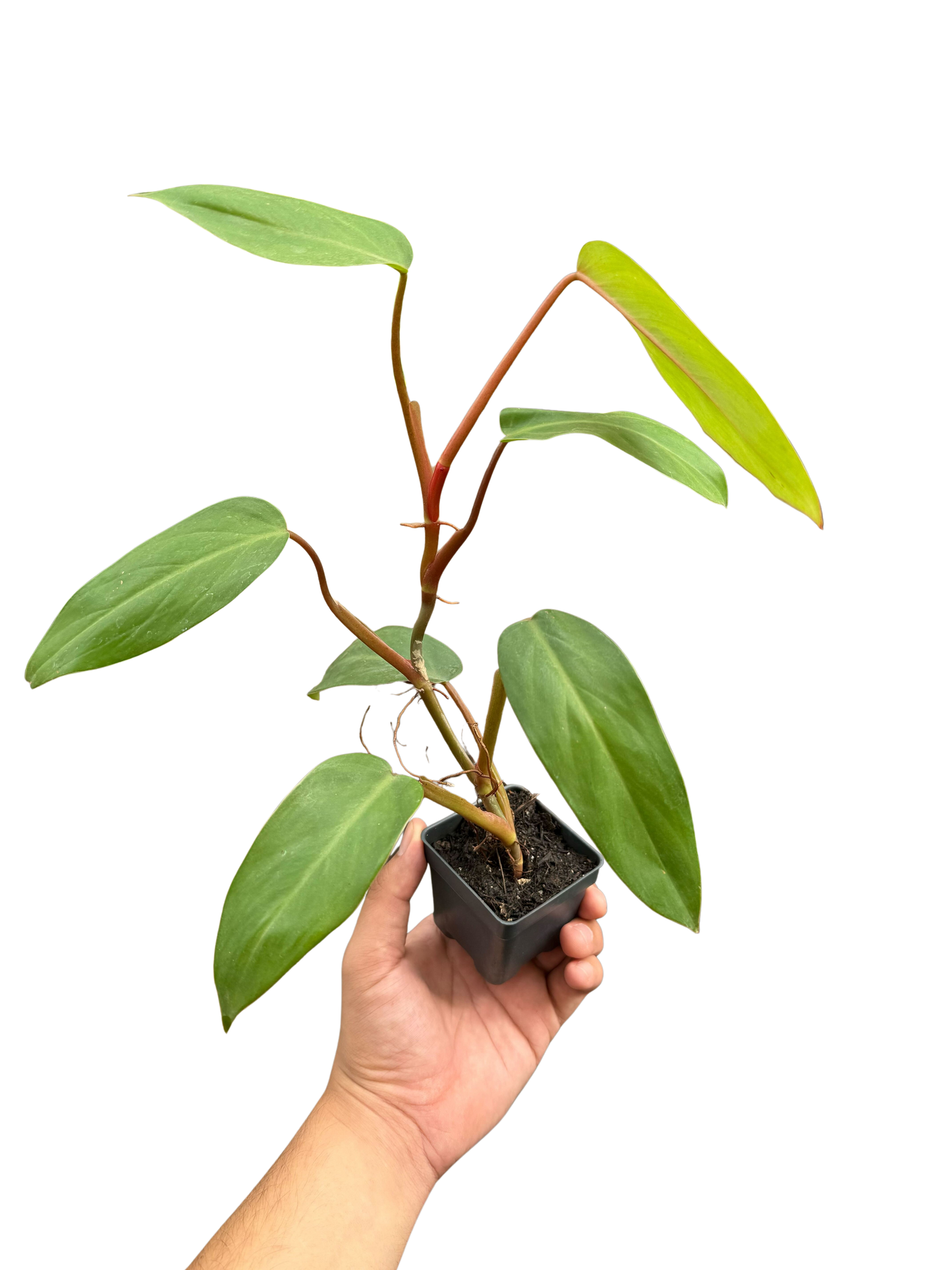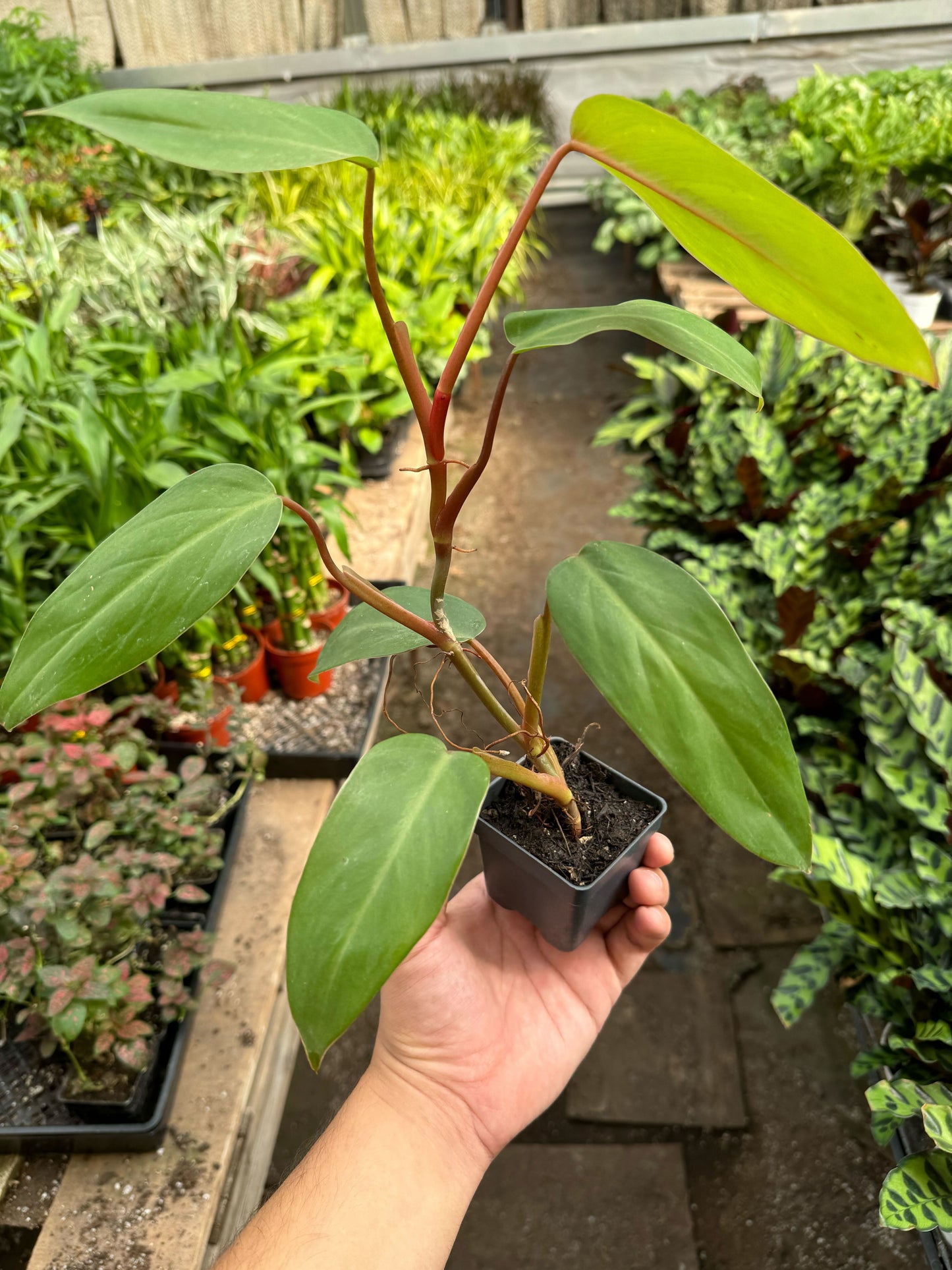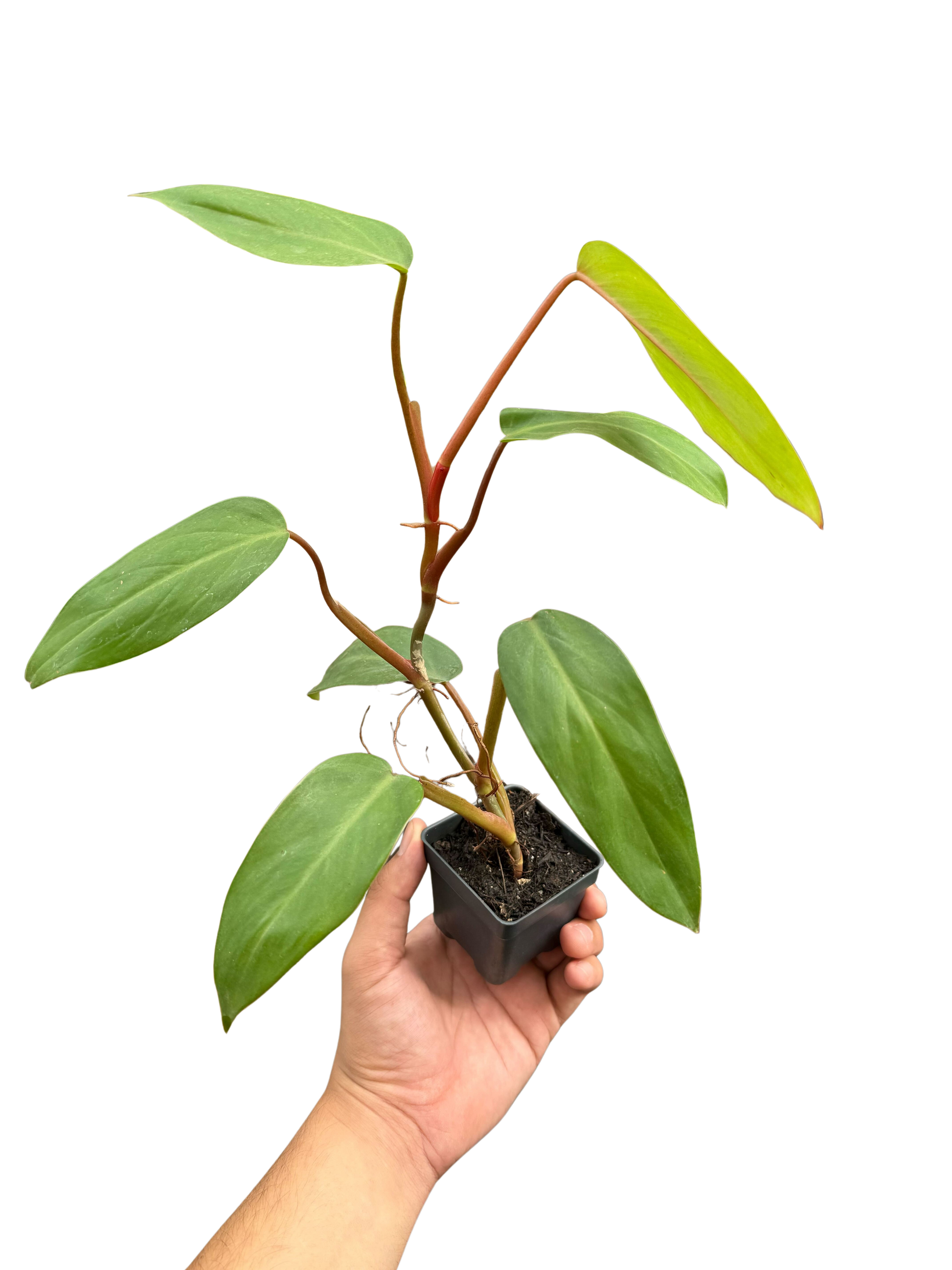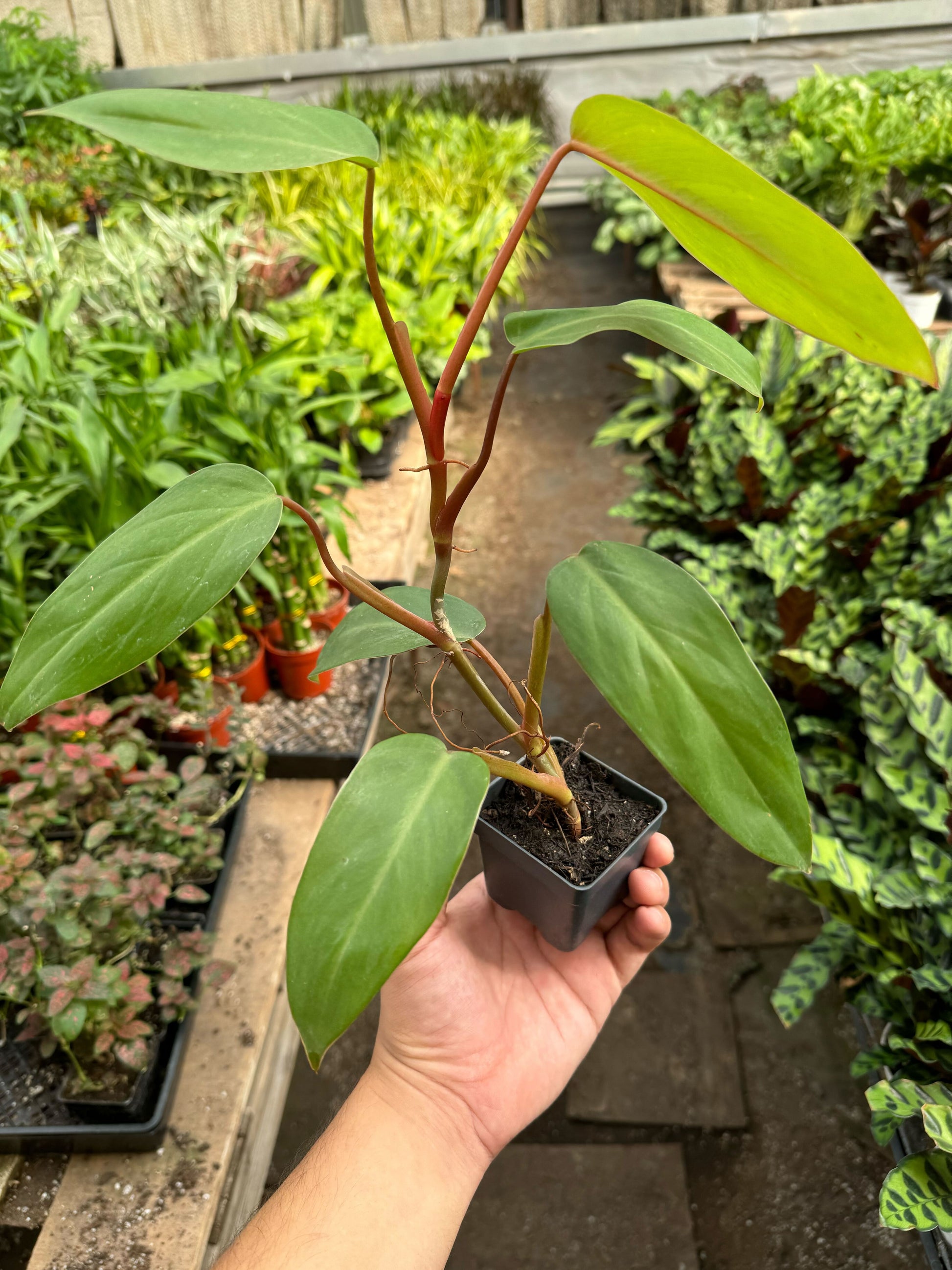Granny Planties
Philodendron Red Emerald
Philodendron Red Emerald
Couldn't load pickup availability
Philodendron Red Emerald
The Philodendron 'Red Emerald' has glossy green leaves with a velvety texture that can grow up to 12 inches long. The leaves have a unique coloration that ranges from deep green to shades of bronze, burgundy, and even red.
Lighting
Philodendron Red Emerald plants prefer bright, indirect light but can tolerate moderate light conditions. Direct sunlight can cause the leaves to become scorched, so it's best to provide filtered or dappled light. East- or west-facing windows are ideal locations for these plants.
Watering
Water your Philodendron Red Emerald plant when the top 1-2 inches of soil feel dry to the touch. Avoid overwatering, as this can lead to root rot. Use room temperature water, and make sure not to get water on the leaves to prevent fungal diseases. Reduce watering in the winter months when the plant is dormant.
Humidity
Philodendron plants thrive in humid environments, typically above 50% relative humidity. You can increase the humidity around your plant by placing it on a tray filled with water and pebbles or using a humidifier. This will help maintain the plant's natural habitat conditions.
Soil
Use a well-draining potting mix that is rich in organic matter. A mix specifically designed for tropical plants or a general-purpose potting soil with added perlite or sand for drainage is suitable. Avoid using regular garden soil, as it can compact and prevent proper drainage.
Fertilizer
Fertilize your Philodendron Red Emerald plant during the growing season (spring and summer) with a balanced, water-soluble fertilizer. Dilute the fertilizer to half the recommended strength to avoid burning the roots. Apply fertilizer once a month, taking care not to get any on the leaves or crown of the plant.
Temperature
Philodendron Red Emerald plants prefer temperatures between 65°F (18°C) and 80°F (27°C). Avoid placing your plant near heating or cooling vents, fireplaces, or drafty windows. Sudden temperature changes can stress the plant, so maintain a relatively constant temperature.
Share



